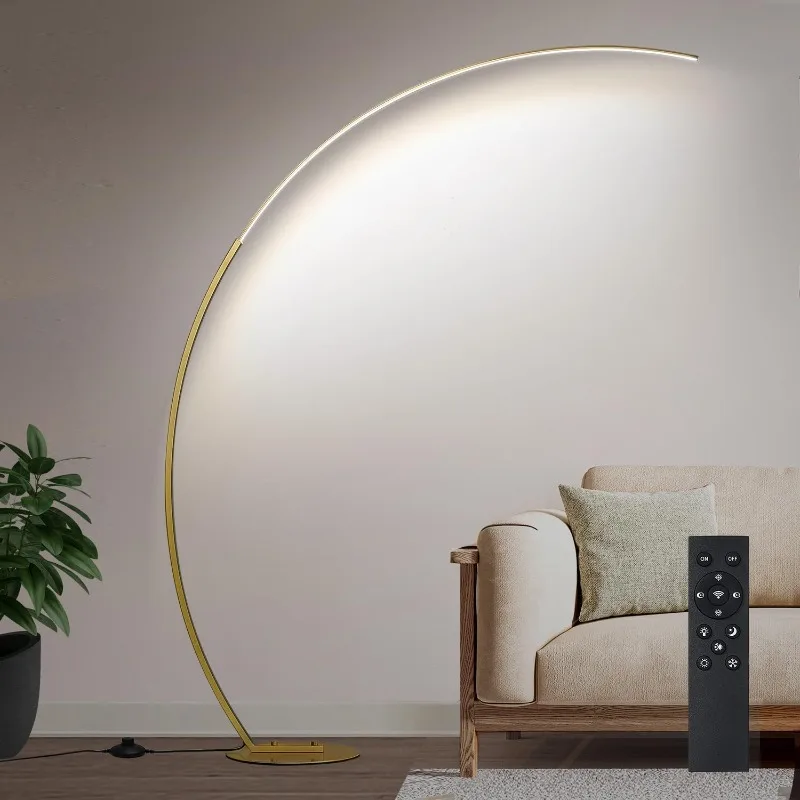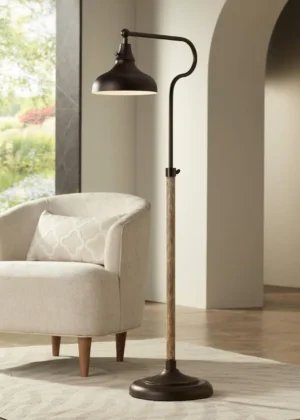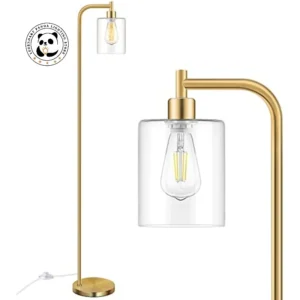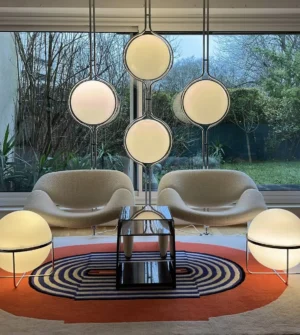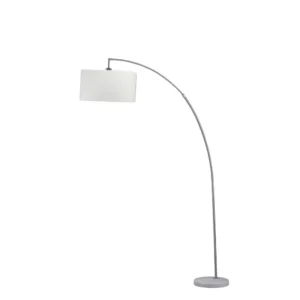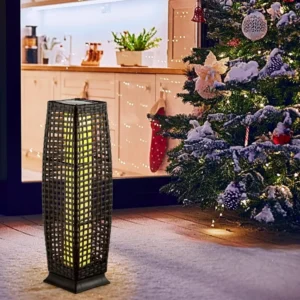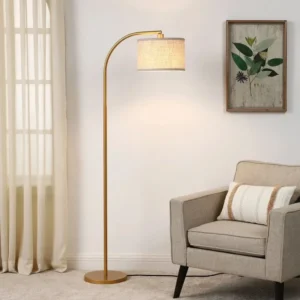Introduction to Lighting Finishes
When designing your home’s interior, lighting fixtures do far more than simply illuminate your space. They serve as decorative elements that can transform a room’s atmosphere, highlight architectural features, and reflect your personal style. Among the many options available, brass and chrome finishes stand out as two classic yet dramatically different choices that can steer your space in entirely different aesthetic directions.
The decision between brass and chrome lighting extends beyond mere color preference. Your choice influences:
- The overall mood and warmth of your space
- How light is reflected and distributed
- Compatibility with existing furniture and decor
- Maintenance requirements and longevity
- Design versatility across different rooms
According to interior design experts, nearly 78% of professional designers consider lighting fixtures the “jewelry” of a room—accent pieces that can make or break the entire design scheme. This underscores how crucial your finish selection truly is.
In this comprehensive guide, we’ll explore the distinct characteristics of both brass and chrome lighting to help you determine which finish best suits your home. Drawing from Interior Ivy’s expertise in curated lighting solutions, we’ll examine everything from aesthetic impact to practical considerations, giving you all the tools needed to make an informed decision for your perfect lighting finish.
The fundamentals of choosing perfect arc floor lamps apply similarly when selecting between brass and chrome finishes, as both material and form work together to create your ideal lighting solution.
Understanding the differences between brass versus chrome arc lamps can significantly impact your space’s overall aesthetic and functionality.
Understanding Brass Lighting: Composition and Characteristics
Brass lighting fixtures derive their distinctive warm golden tones from their composition—an alloy primarily made of copper and zinc. This combination creates a material that’s not only visually appealing but also durable and malleable enough for intricate designs.
When shopping for brass lighting, you’ll encounter several different finishes, each offering unique aesthetic qualities:
Polished Brass: Highly reflective with a bright, mirror-like shine that creates a formal, luxurious appearance. This finish makes a bold statement and works well in traditional or glamorous settings.
Brushed/Satin Brass: Features a matte surface with subtle directional grain that reduces reflectivity. This contemporary finish shows fewer fingerprints and water spots than its polished counterpart, making it practical for frequently used fixtures.
Antique Brass: Chemically treated to create a darkened, aged appearance with depth and character. The finish varies from lightly aged to heavily distressed, offering vintage charm that pairs wonderfully with traditional and transitional interiors.
Unlacquered Brass: Often called a “living finish,” this untreated brass will naturally patina over time. Initially bright, it gradually darkens and develops unique character based on environmental factors and handling—essentially telling the story of your home through its evolving appearance.
The manufacturing process significantly affects not just the appearance but also the performance of brass fixtures. Solid brass offers superior durability compared to brass-plated options, which feature a thin layer of brass over a different base metal.
Our collection of brass arc floor lamps showcases how these warm-toned fixtures can transform your space with their timeless elegance and versatility.
Understanding Chrome Lighting: Composition and Characteristics
Chrome lighting fixtures achieve their distinctive silvery-blue brilliance through an electroplating process. Unlike brass, which is an alloy, chrome is actually a thin layer of chromium applied over a base metal—typically steel, brass, or zinc. This electroplating process involves using an electrical current to deposit chromium atoms onto the base material, creating that characteristic reflective surface.
The most common chrome finishes for lighting include:
Polished Chrome: Features an exceptionally reflective, mirror-like surface with cool bluish undertones. This highly reflective finish maximizes light distribution in a space and creates a clean, contemporary look. Its bright appearance can make fixtures appear to “disappear” against light backgrounds while creating dramatic contrast against darker ones.
Satin/Brushed Chrome: Offers a softened reflectivity with a subtle grain pattern that diffuses light rather than sharply reflecting it. This finish reduces glare and fingerprint visibility while maintaining chrome’s cool tones. It provides a more subtle, sophisticated option for contemporary spaces.
Chrome’s composition gives it distinct properties compared to brass, including excellent tarnish resistance, high durability in most indoor environments, and a consistently cool color temperature that remains stable over time rather than developing a patina.
For spaces where cool tones and contemporary styling are desired, our chrome arc floor lamp collection offers exceptional options that blend seamlessly with modern interiors.
Visual Impact: How Finish Affects Light Quality and Room Aesthetics
The finish you choose for your lighting fixtures dramatically influences not just the fixture’s appearance but also how light interacts with your space. This impact goes far beyond simple decoration—it fundamentally changes the quality of light and mood in your room.
Brass Lighting Effects:
Brass fixtures create warm, golden reflections that enhance the light they emit. This warmth flatters skin tones and adds a cozy, inviting ambiance to any space. The golden undertones complement warm color schemes featuring reds, oranges, and earthy neutrals, while providing beautiful contrast to cooler blues and greens. Brass fixtures tend to add visual weight and richness to a space, making them excellent focal points in dining rooms and living areas.
Chrome Lighting Effects:
Chrome produces crisp, clean reflections that amplify brightness with cool undertones. These fixtures can make a space feel more expansive and airy, as their reflective qualities bounce light around the room more efficiently. Chrome’s neutral silvery tone works exceptionally well with cool color palettes featuring blues, grays, and whites. In smaller spaces, chrome’s reflective properties can help create the illusion of more space and light.
The color temperature of your light source interacts differently with each finish as well. Warm bulbs (2700-3000K) paired with brass create an ultra-cozy glow, while the same bulbs with chrome produce a more balanced light. Cool bulbs (4000K+) can make chrome fixtures appear stark and clinical but may help modernize brass fixtures.
Understanding the chrome versus brass comparison in terms of light quality helps ensure your lighting enhances your interior design rather than detracting from it.
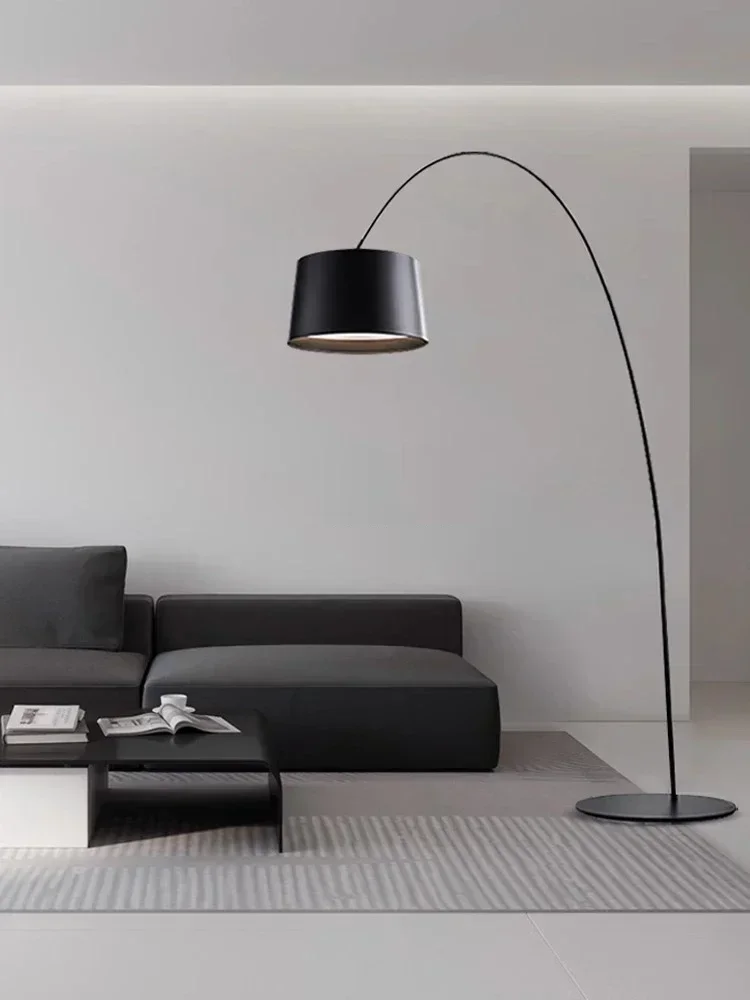
For spaces where you desire a cozier atmosphere, exploring options for warmer lighting can help you create the perfect ambiance regardless of your chosen finish.
Durability Comparison: Longevity and Wear Patterns
When investing in lighting fixtures, understanding how brass and chrome compare in longevity and durability helps ensure you select finishes that will stand the test of time in your specific environment.
Scratch Resistance:
Chrome offers superior scratch resistance compared to brass due to its hardness. The electroplated chromium creates a tough outer shell that withstands daily contact better than brass. However, when chrome does scratch, the underlying base metal may become exposed, creating more visible damage than on brass fixtures, where scratches tend to blend with patina over time.
Tarnishing and Surface Changes:
Brass naturally oxidizes when exposed to air and moisture, developing a patina that many consider desirable as it adds character and depth. Lacquered brass resists this change but may eventually break down. Chrome, conversely, remains relatively unchanged over time and resists tarnishing excellently, maintaining its bright appearance for many years with proper care.
Structural Integrity:
Solid brass fixtures typically offer superior structural integrity compared to chrome-plated items. Brass is denser and more resistant to bending or breaking under stress. Quality brass fixtures can last for generations when properly maintained. Chrome-plated fixtures, while durable, depend heavily on the quality of both the plating process and the underlying base metal for their longevity.
Aging Process:
The most dramatic difference between these finishes is how they age. Chrome is designed to maintain its original appearance indefinitely, while brass tells a story through its changing appearance. Quality brass fixtures can last 25+ years, with many antique brass fixtures still functioning after 100+ years. Chrome fixtures typically maintain their appearance for 15-20 years before the plating may begin to show wear.
Both materials can be excellent long-term investments when you select quality pieces like those found in our metal finish arc floor lamps collection, which features premium construction designed for lasting beauty.
Maintenance Requirements: Cleaning and Care
Maintaining the beauty of your lighting fixtures requires different approaches depending on whether you’ve chosen brass or chrome. Understanding these care requirements helps preserve your investment and keep your fixtures looking their best.
Brass Maintenance:
* Clean with mild soap and warm water using a soft cloth
* Dry thoroughly after cleaning to prevent water spots
* Apply specialized brass polish 2-4 times yearly for unlacquered brass
* Avoid acidic cleaners that can damage the finish
* Consider using microfiber cloths to prevent scratching
* Fingerprints and smudges show readily on polished brass and require more frequent cleaning
Chrome Maintenance:
* Wipe with a soft cloth dampened with water or glass cleaner
* Use a small amount of mild dish soap for stubborn spots
* Buff dry with a microfiber cloth to prevent water spots
* Clean approximately once monthly for normal use
* Avoid abrasive cleaners or scrubbing pads that can scratch the plating
* White vinegar solution (diluted 50/50 with water) removes hard water deposits
Special Considerations:
For brass fixtures, embrace patina development as part of the material’s charm or maintain a more consistent appearance through regular polishing. Many brass enthusiasts use products containing carnauba wax to create a protective barrier that slows oxidation.
For chrome fixtures, preventing water spots is key—particularly in bathrooms where humidity is high. After showering, wiping down chrome fixtures helps prevent mineral deposits from forming on the surface.
Regardless of your chosen finish, understanding the perfect arc floor lamp guide includes knowing how to properly maintain your fixtures to ensure they remain beautiful for years to come.
Style Compatibility: Which Rooms and Designs Work Best
The finish of your lighting fixtures significantly impacts how they complement different interior design styles. Understanding which spaces naturally pair with brass or chrome helps create a cohesive, intentional look throughout your home.
Brass Lighting Complements:
* Traditional Interiors: Brass’s warm tones enhance the rich woods and classic textiles found in traditional design.
* Mid-Century Modern: The golden hues of brass pair beautifully with the walnut tones and organic shapes of mid-century pieces.
* Art Deco: The luxurious warmth of polished brass perfectly accents the glamorous feel of art deco interiors.
* Bohemian/Eclectic: Antique or unlacquered brass adds character and warmth to layered, collected spaces.
* Farmhouse/Rustic: Antiqued brass fixtures provide the perfect weathered complement to rustic design elements.
Chrome Lighting Complements:
* Contemporary/Modern: Chrome’s sleek, reflective qualities enhance the clean lines and minimalist approach of modern design.
* Industrial: Chrome fixtures with exposed bulbs or mechanical elements reinforce industrial aesthetics.
* Scandinavian: The bright, clean appearance of chrome works well with the light woods and neutral palettes of Scandinavian design.
* Minimalist: Chrome’s ability to almost “disappear” against white backgrounds makes it ideal for minimalist spaces.
* Retro/50s: Bright chrome accents capture the optimistic futurism of mid-century American design.
Room-Specific Recommendations:
Brass tends to excel in living rooms, dining rooms, and bedrooms where its warmth creates inviting, comfortable spaces perfect for relaxation or entertainment. Chrome typically performs best in kitchens, bathrooms, and home offices where its crisp, clean appearance reinforces functionality and cleanliness.
When considering color schemes, brass naturally enhances warm palettes featuring browns, creams, terracotta, and rich jewel tones. Chrome beautifully complements cool color schemes featuring blues, grays, whites, and crisp blacks.
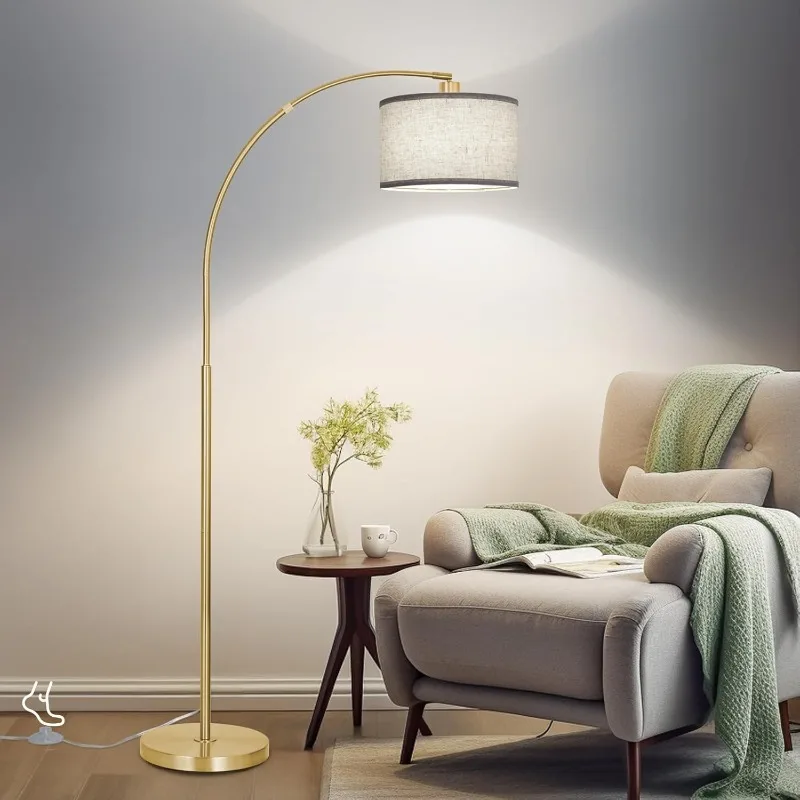
For a truly harmonious interior, coordinating furniture with lighting ensures that your fixtures enhance rather than compete with your other design elements.
Cost Considerations: Investment and Value
When evaluating brass versus chrome lighting fixtures, understanding the cost implications helps you make a financially sound choice that aligns with both your budget and long-term design plans.
Typical Price Comparisons:
Brass lighting fixtures generally command premium prices compared to their chrome counterparts. This price difference stems primarily from material costs—brass is more expensive as a raw material than the metals typically used in chrome-plated fixtures. Additionally, quality brass fixtures often feature solid construction rather than plating, further increasing their cost.
Factors Affecting Pricing:
* Construction Quality: Solid brass fixtures cost significantly more than brass-plated alternatives but offer superior longevity
* Plating Thickness: Higher-quality chrome fixtures feature thicker plating that resists wear better than budget options
* Design Complexity: Intricate designs typically cost more regardless of finish, but brass’s malleability often allows for more detailed craftsmanship
* Brand and Origin: Designer pieces and fixtures from certain regions typically command higher prices
Long-Term Value:
While brass fixtures require a larger initial investment, they often retain or even increase in perceived value over time, especially as they develop a desirable patina. Many interior designers consider quality brass fixtures investment pieces that can last for generations. Chrome fixtures, while more affordable initially, maintain a consistent appearance rather than developing character through aging.
When considering overall value, factor in maintenance requirements and replacement timelines. A quality brass fixture might last decades with minimal care, while a less expensive chrome fixture could require replacement sooner as plating wears or designs become dated.
Understanding what to look for in an arc floor lamp helps ensure you’re investing in quality construction that will provide lasting value regardless of your chosen finish.
Environmental and Sustainability Factors
As environmental consciousness becomes increasingly important in purchasing decisions, considering the sustainability aspects of brass versus chrome lighting can help align your design choices with your values.
Production Impact:
Brass production typically requires less energy and generates fewer harmful byproducts than chrome plating. The chrome electroplating process uses chromium, which can be environmentally problematic if not properly managed, potentially releasing hexavalent chromium—a known carcinogen—into the environment. Modern production facilities have significantly reduced these risks, but brass production generally maintains a smaller environmental footprint.
Recyclability:
Both materials offer excellent recyclability, but brass holds a slight edge. Brass is approximately 85% recyclable without losing quality or properties through the recycling process. Chrome-plated items can be recycled, but the plating process complicates separation, sometimes resulting in downcycling rather than true recycling. Many antique brass fixtures remain in use after over a century, demonstrating their remarkable longevity.
Energy Efficiency Considerations:
Neither finish significantly impacts the energy efficiency of LED bulbs, though the reflective properties of each material can affect light distribution. Chrome’s higher reflectivity can sometimes allow for lower-wattage bulbs while maintaining similar brightness levels. However, brass fixtures often create warmer light that may be perceived as more comfortable, potentially reducing the need for additional ambient lighting.
The longevity factor plays significantly into sustainability calculations. A brass fixture that lasts for decades creates less waste than chrome alternatives that might need replacement more frequently. When paired with LED arc floor lamps, both finishes can contribute to an energy-efficient lighting plan for your home.
Adjustable Arc Floor Lamp, Bronze Arc Floor Lamp
Price range: $440.95 through $558.52 Select options This product has multiple variants. The options may be chosen on the product pageBrass Arc Floor Lamp, Contemporary Arc Floor Lamp, LED Arc Floor Lamp
Price range: $490.72 through $522.04 Select options This product has multiple variants. The options may be chosen on the product pageChrome Arc Floor Lamp, LED Arc Floor Lamp
Price range: $304.95 through $1,210.40 Select options This product has multiple variants. The options may be chosen on the product pageContemporary Arc Floor Lamp, Silver Arc Floor Lamp
$459.99 Select options This product has multiple variants. The options may be chosen on the product pageLED Arc Floor Lamp, Rattan Arc Floor Lamp
$313.58 Select options This product has multiple variants. The options may be chosen on the product pageContemporary Arc Floor Lamp, Gold Arc Floor Lamp
$196.24 Select options This product has multiple variants. The options may be chosen on the product page
Decision Framework: How to Make Your Choice
Choosing between brass and chrome lighting doesn’t have to feel overwhelming. This structured approach will help you determine the ideal finish for your space by considering all relevant factors systematically.
Step 1: Evaluate Your Existing Space
Begin by assessing your current decor:
* What are the dominant colors in your room? (Warm tones favor brass, cool tones favor chrome)
* What metal finishes already exist in the space? (Hardware, fixtures, furniture accents)
* What is the overall style direction? (Traditional, contemporary, eclectic, etc.)
Step 2: Consider Mood and Ambiance
Determine the atmosphere you want to create:
* Do you want the space to feel warm and intimate or crisp and bright?
* Is the lighting fixture meant to be a statement piece or blend into the background?
* How important is consistency versus creating intentional contrast?
Step 3: Assess Practical Needs
Evaluate the functional requirements:
* Is the fixture in a high-humidity area like a bathroom? (Chrome typically performs better)
* How much maintenance are you willing to perform? (Brass generally requires more)
* Will the fixture be frequently touched or handled? (Consider fingerprint visibility)
Step 4: Factor in Your Budget
Be realistic about your investment:
* Are you seeking a long-term investment piece or a more temporary design solution?
* Is the price difference between brass and chrome significant for your chosen fixture style?
* Does the warranty or expected lifespan justify any price premium?
For those still uncertain, consider the multi-finish approach discussed in the next section. Remember that there’s no universally “correct” choice—the best finish is the one that brings you joy and functions well in your space.
Understanding whether arc floor lamps will work in your space is another important consideration that works alongside your finish selection to ensure your lighting enhances your interior design.
Successfully Mixing Metal Finishes
Contemporary interior design has moved away from strict matching of all metal finishes throughout a home. Today’s most sophisticated spaces often feature intentionally mixed metals that add depth, interest, and personality to rooms. Here’s how to successfully combine brass and chrome elements for a cohesive look.
Guidelines for Mixing Metals:
* Establish a dominant metal that appears in approximately 60-70% of your fixtures, with secondary metals making up the remaining 30-40%
* Create visual zones where different metals can exist separately yet harmoniously (for example, chrome in the kitchen with brass in the adjacent dining area)
* Consider metals as neutrals that can work together when you maintain consistency in other elements like color scheme and style
* Look for undertone compatibility – warm metals (brass, gold, copper) generally pair better together, as do cool metals (chrome, nickel, silver)
Successful Combinations:
* Chrome lighting with brass hardware: Use chrome pendant lights with brass cabinet pulls and faucets for an intentional contrast
* Brass statement lighting with chrome functional fixtures: Make brass chandeliers or floor lamps the focal point while using chrome for utilitarian task lighting
* Black metal as a neutralizer: Incorporate black fixtures or furniture to bridge between brass and chrome elements
Designer Secret: When mixing metals, repeating each finish at least twice in a space helps the combination appear intentional rather than accidental. For example, if introducing brass lighting into a primarily chrome space, add brass in picture frames, decorative objects, or furniture details to create cohesion.
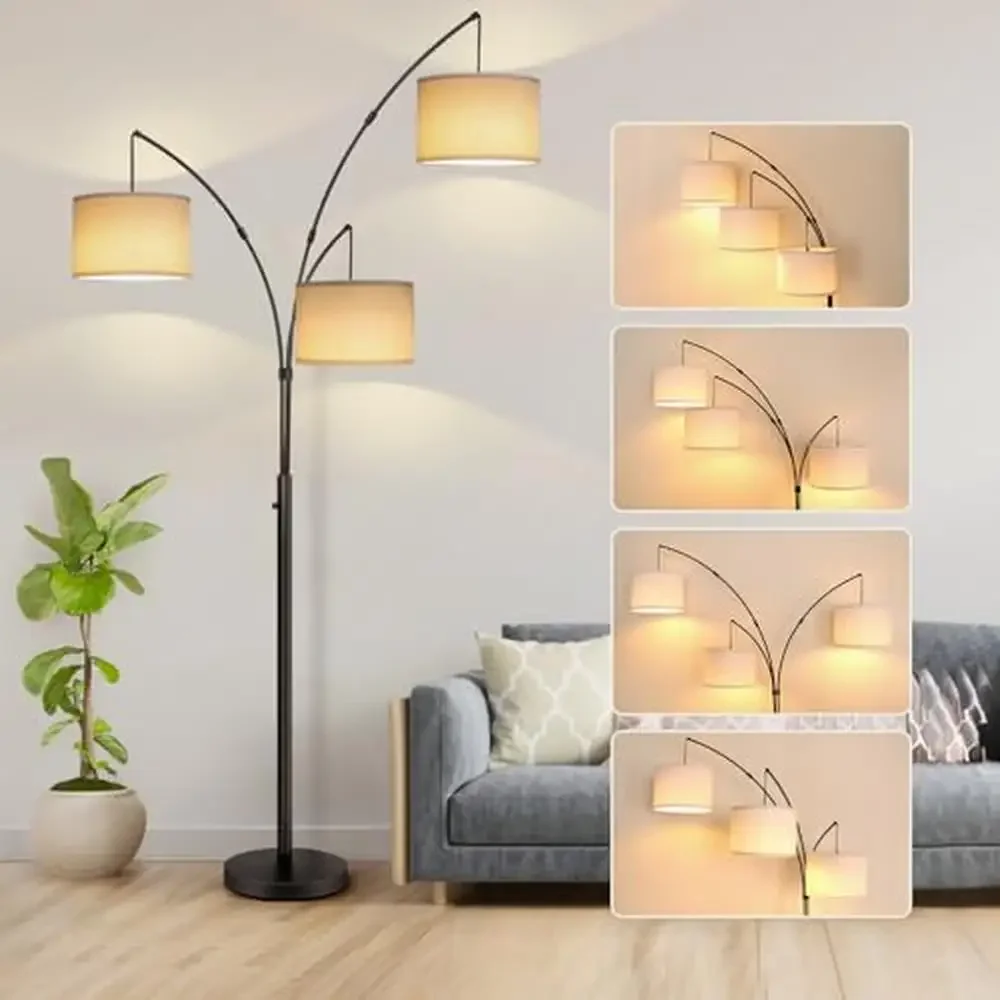
For those who appreciate warmth but want something more unique than traditional brass, our gold arc floor lamp collection offers sophisticated alternatives that pair beautifully with various metal finishes.
Designer Tips for Specific Lighting Types
Different lighting categories have unique considerations when choosing between brass and chrome finishes. This targeted guidance will help you select the ideal finish for each lighting type in your home.
Pendant Lights & Chandeliers
* Brass Advantages: Creates warm, flattering light ideal for dining areas; makes a striking focal point in entryways; adds visual weight to high-ceiling rooms
* Chrome Advantages: Maximizes light output; complements contemporary architecture; creates beautiful sparkle with crystal elements
* Designer Tip: Consider the fixture’s visibility—prominent chandeliers benefit from brass’s warmth, while minimalist pendants often look cleaner in chrome
Wall Sconces
* Brass Advantages: Casts a warm glow that flatters skin tones; works well in intimate spaces like bedrooms and dining nooks; complements wallpaper and textured walls
* Chrome Advantages: Disappears against light-colored walls; creates clean lines in hallways and bathrooms; reflects light efficiently in dark corridors
* Designer Tip: Match sconce finishes to nearby door hardware for a cohesive look
Floor & Table Lamps
* Brass Advantages: Adds warmth to reading nooks; creates inviting ambiance in living spaces; develops character over time
* Chrome Advantages: Works well with glass and acrylic furniture; maintains a consistent appearance; complements technology-heavy spaces
* Designer Tip: Floor lamps benefit from the substantial look of brass, while task-oriented desk lamps often function better visually in chrome
Recessed & Track Lighting
* Brass Advantages: Trim in brass adds unexpected warmth to utility lighting; creates cohesion with traditional decor
* Chrome Advantages: Disappears into ceilings; maintains focus on illuminated objects rather than fixtures; clean, contemporary look
* Designer Tip: When mixing recessed lighting with decorative fixtures, match the recessed trim to hardware rather than statement lighting for balanced design
For comprehensive guidance on selecting the perfect fixture beyond just finish considerations, our complete arc floor lamp guide provides expert insights on style, size, and placement.
Frequently Asked Questions About Metal Lighting Finishes
Is brass lighting currently in style?
Yes, brass lighting has experienced a strong revival in recent years and continues to be popular. Unlike the shiny yellow brass of the 1980s, today’s brass fixtures feature more sophisticated finishes ranging from satin to antiqued patinas. Design experts predict brass will remain fashionable for years to come due to its warmth and ability to complement many design styles.
Will chrome fixtures look dated soon?
Chrome has remarkable staying power in interior design. Its neutral, reflective quality allows it to adapt to changing styles rather than defining a specific era. While chrome was particularly popular during mid-century design movements, its clean appearance continues to work well with contemporary interiors. In spaces like bathrooms and kitchens, chrome has proven to be timeless rather than trendy.
Can I use brass fixtures if my faucets are chrome?
Yes, intentionally mixing metals is a contemporary design approach. The key is making the combination look purposeful by repeating each metal finish at least twice within the space. If your faucets are chrome, you can absolutely incorporate brass lighting, especially if you add brass elements elsewhere through hardware, mirror frames, or decorative objects to create balance.
Which finish shows fewer water spots and fingerprints?
Brushed or satin finishes in either material show fewer water spots and fingerprints than polished finishes. Between polished options, chrome generally shows water spots more prominently, while polished brass tends to show fingerprints more visibly. For high-touch areas or humid spaces like bathrooms, brushed chrome or satin brass offers more practical alternatives to their highly polished counterparts.
How do I prevent brass from tarnishing?
To prevent brass from tarnishing, regularly clean it with a soft cloth and apply a quality brass polish or wax that creates a protective barrier. Some designers recommend Renaissance Wax, a museum-quality product that provides excellent protection. For lacquered brass, simply dusting and occasional cleaning with mild soap and water will maintain its finish. If you prefer the aged look, embrace tarnishing as part of brass’s evolving character.
For specific applications like living rooms, understanding the best arc lamps for living rooms will help you identify which finish best complements your particular space.
Key Takeaways for Your Lighting Decision
As you make your final decision between brass and chrome lighting, keep these essential points in mind:
• Brass lighting offers:
– Warm, golden tones that create an inviting atmosphere
– Developing character and patina over time
– Strong compatibility with traditional, vintage, and warm contemporary styles
– Higher initial investment but excellent long-term value
– More visible maintenance requirements but remarkable longevity
• Chrome lighting provides:
– Bright, reflective finish with cool undertones
– Consistent appearance that resists tarnishing
– Perfect partnership with modern, contemporary, and industrial designs
– More affordable price points for quality fixtures
– Easy maintenance with minimal upkeep requirements
Remember that the “best” choice depends entirely on your individual needs, preferences, and space requirements. Quality matters significantly more than material—a well-crafted fixture in either finish will outperform a poorly made alternative regardless of material.
Consider your existing decor, the mood you wish to create, and your maintenance preferences when making your selection. For those who appreciate both finishes or wish for design flexibility, black arc floor lamps offer a versatile neutral option that complements both brass and chrome accents.
Interior Ivy’s curated lighting collections ensure exceptional quality regardless of which finish you ultimately select—allowing you to choose based on aesthetic preference rather than concerns about construction or durability. With the right lighting finish, your space will shine with personality and style for years to come.

